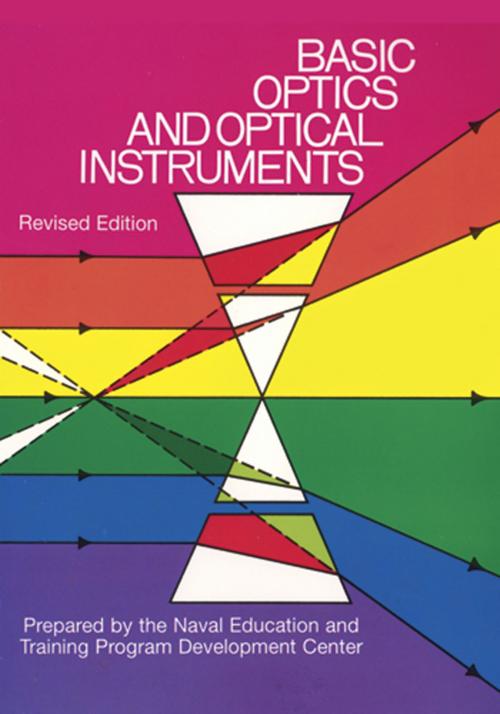Basic Optics and Optical Instruments
Revised Edition
Nonfiction, Science & Nature, Science, Physics, Optics| Author: | Naval Education | ISBN: | 9780486164618 |
| Publisher: | Dover Publications | Publication: | February 6, 2013 |
| Imprint: | Dover Publications | Language: | English |
| Author: | Naval Education |
| ISBN: | 9780486164618 |
| Publisher: | Dover Publications |
| Publication: | February 6, 2013 |
| Imprint: | Dover Publications |
| Language: | English |
Designed as a training manual for Navy personnel (Opticalman 3 & 2), this book provides thorough coverage of the basic theory of optics and its applications. Newly revised and updated, it presents the subject matter with extraordinary clarity, stressing theory and application equally. It will serve admirably to supplement a course in which only one of these factors is emphasized.
The book begins with an introduction to the Opticalman rating. It then goes on to discuss the characteristics of light, with special emphasis on wavelengths, reflection, and refraction. Two chapters contain a detailed discussion of the formation of images by mirrors, lenses, and prisms; these explain how images are formed by thin and thick lenses, how to use the lens formula, and how to determine the location of an image formed by an optical instrument. The mechanical construction, maintenance procedures, and machining operations of basic optical instruments are explained in detail, supplemented by chapters on maintenance procedures, basic instrument repair, machine shop practices, optical and navigation equipment maintenance, night vision sights and gunsights and submarine periscopes. A helpful four-part appendix includes a glossary, common formulae used in optical repair and machine operations, prefixes and symbols used in the metric system, and English and metric system units of measurement, with common equivalents and conversions.
Profusely illustrated with 370 charts, diagrams, photographs, and drawings of tools and parts of instruments — including cross-sections that reveal inner workings — this manual is especially clear and well-organized. Although designed for use in U.S. Naval training schools, it can be used to great advantage as a basic text in optics in standard technical schools, and it will be immensely valuable even to the layman who desires a knowledge of the fundamentals of optics.
Designed as a training manual for Navy personnel (Opticalman 3 & 2), this book provides thorough coverage of the basic theory of optics and its applications. Newly revised and updated, it presents the subject matter with extraordinary clarity, stressing theory and application equally. It will serve admirably to supplement a course in which only one of these factors is emphasized.
The book begins with an introduction to the Opticalman rating. It then goes on to discuss the characteristics of light, with special emphasis on wavelengths, reflection, and refraction. Two chapters contain a detailed discussion of the formation of images by mirrors, lenses, and prisms; these explain how images are formed by thin and thick lenses, how to use the lens formula, and how to determine the location of an image formed by an optical instrument. The mechanical construction, maintenance procedures, and machining operations of basic optical instruments are explained in detail, supplemented by chapters on maintenance procedures, basic instrument repair, machine shop practices, optical and navigation equipment maintenance, night vision sights and gunsights and submarine periscopes. A helpful four-part appendix includes a glossary, common formulae used in optical repair and machine operations, prefixes and symbols used in the metric system, and English and metric system units of measurement, with common equivalents and conversions.
Profusely illustrated with 370 charts, diagrams, photographs, and drawings of tools and parts of instruments — including cross-sections that reveal inner workings — this manual is especially clear and well-organized. Although designed for use in U.S. Naval training schools, it can be used to great advantage as a basic text in optics in standard technical schools, and it will be immensely valuable even to the layman who desires a knowledge of the fundamentals of optics.















